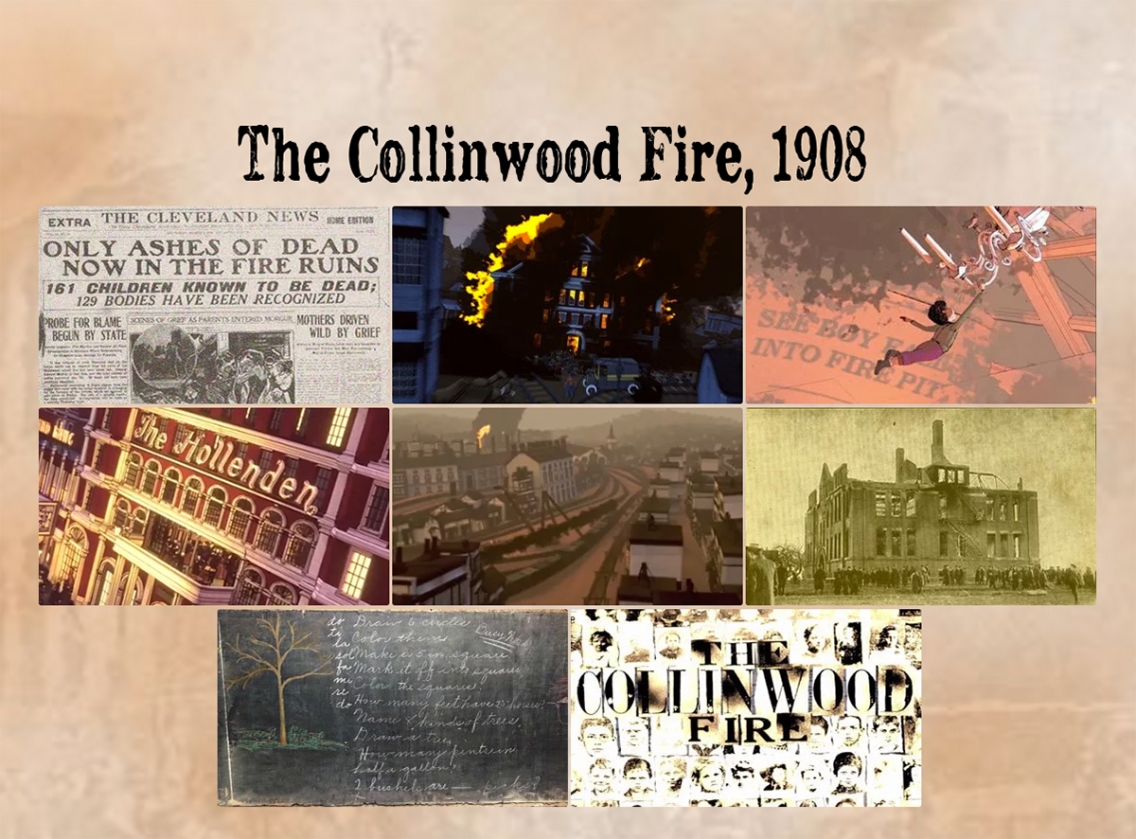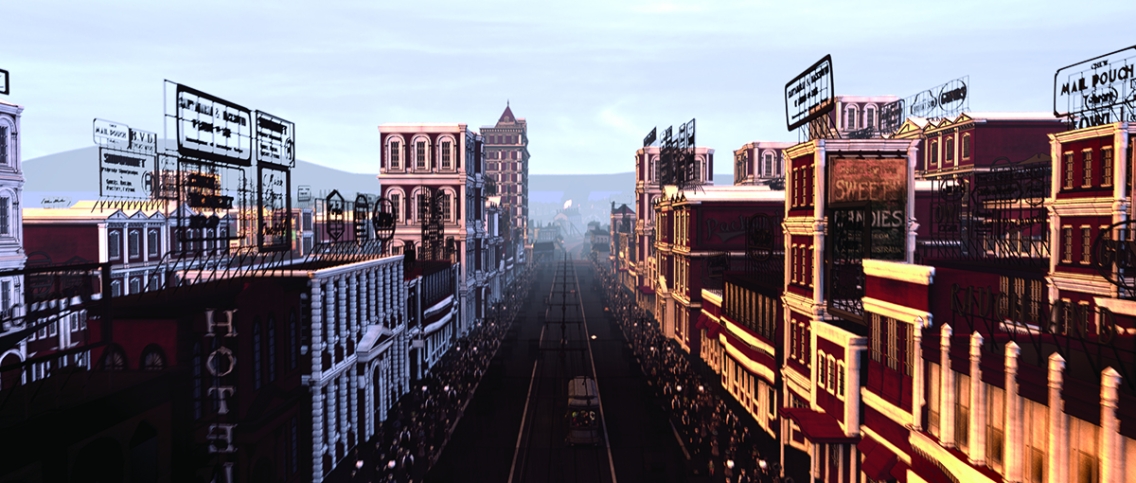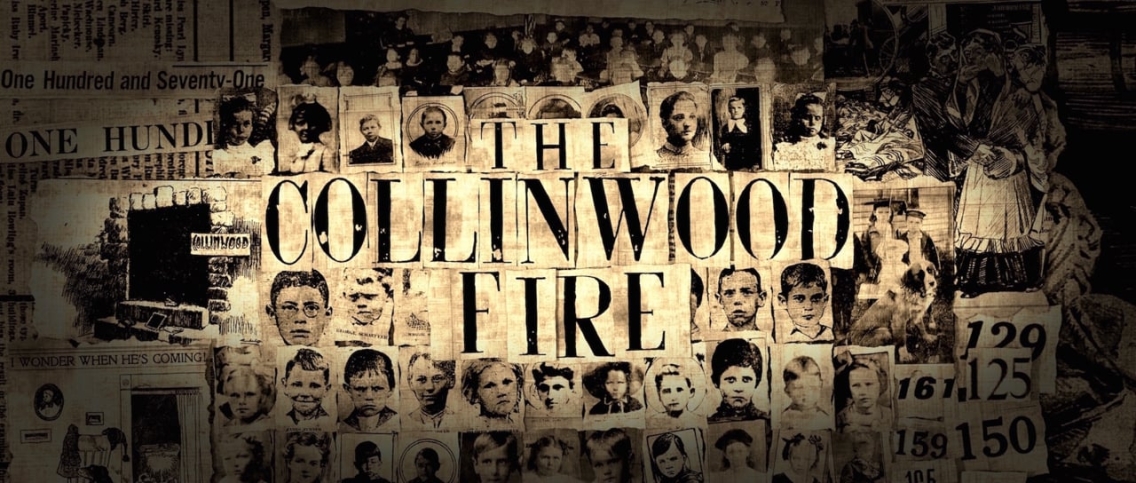Forgotten Ohio Tragedy Comes Alive in Professor’s New Website
MIDDLEBURY, Vt. – Unless you live in Cleveland, the Collinwood fire of 1908 may be the worst American disaster you’ve never heard of. On March 8 of that year, fire ripped through an elementary school in the nearby Cleveland suburb, killing 172 children, two teachers, and a rescuer. The brick exterior created a chimney effect that quickly incinerated the wooden interior. Other circumstances, including an ill-equipped fire department and only two exits, ensured that anyone not killed by smoke and flames would be crushed when the inside floors collapsed.
As the community buried half of its school-aged children, the story made national headlines. But unlike other famous American disasters, such as the Triangle Shirt Waist factory fire, that are commonly taught in schools, the Collinwood incident was largely forgotten.

Now, an ambitious website published by Professor Michael Newbury, Arts Technology Specialist Daniel Houghton, and a team of Middlebury students sheds new light on the Collinwood fire, offering a trove of historic photos, news clippings, documents, and film footage, as well as a short animated film. Newbury says the site was designed to engage viewers in a way that only the web can deliver.
“The starting idea here was to invent something that was native to the web, that followed its logic and followed the logic that people expect when they’re on the web,” said Newbury. “It’s really an online digital narrative, complexly told.”
Newbury stumbled upon the Collinwood story a few years ago when he was doing research for a course on disasters. He was looking up information about a factory explosion in Minnesota when he found Collinwood photos, clippings, and old film footage. He began to realize it was a significant event that had not been well documented, particularly in the historical context of immigration, industrialization, school architecture, and mass media.

The website immerses viewers in early 20th-century Cleveland, organizing the content into self-guided chapters about news coverage, the seamy side of Cleveland’s Superior Avenue, the booming railroad town of Collinwood, and the epidemic of school fires across the country.
At the center of it all is a short animated film produced by Newbury, Houghton, and students in the Middlebury College Animation Lab that imagines the fire through the eyes of a journalist and an aspiring young filmmaker.
As the film opens, the reporter learns of the fire and scurries from the news room. A streetcar transports us from bustling Superior Avenue to the grim chaotic scene unfolding at Lake View Elementary School a short distance away. When we arrive, the building is fully engulfed in flames and desperate children search for an escape. There’s no need for dialogue; the sounds of roaring fire and panic tell it all.
Like the rest of the content, the film prompts many questions. Why, for example, does a teacher–later described as “heroic”–attempt to rescue one child while leaving another behind? The ambiguity creates many points for discussion, and Newbury says this is how history should be approached.
“There’s a lot of uncertainty,” said Newbury. “It’s about process–how do people come to any kind of understanding of historic events? I hope people’s first reaction to the film is, ‘What did I just see? I kind of like what I saw, but what did I see?’”
Many of the film’s details fly by on first viewing, but Newbury hopes people will watch it repeatedly to absorb nuances. A separate clip from the film provides voice-over commentary by Newbury, explaining the thought process behind an especially perplexing scene. As a teaching resource, the site also invites students to download a clip from the film and create their own voiceover interpretation.
Newbury produced the website and film with support from the College’s Digital Liberal Arts initiative, which helps faculty members explore ways to bring digital technologies into their scholarship. He teamed up with Houghton, whose previous work he had admired. Together with 12 student animators, they created the complex film and published the website, which they describe as a digital-native storytelling experiment. The site is freely available to history buffs, educators, and students.
In some ways, the project redefined Newbury’s ideas about the solitary nature of authorship. Unlike writing a book, he says, the research and production for The Collinwood Fire, 1908 was highly collaborative, requiring the talents of many individuals to complete.
Newbury hopes the project might inspire fellow scholars to consider new ways of studying history and to create their own versions of complex narratives. “I’d like to think what we’ve provided is a way to think about what a cultural-historical web site could look like.”
Reporting by Stephen Diehl


